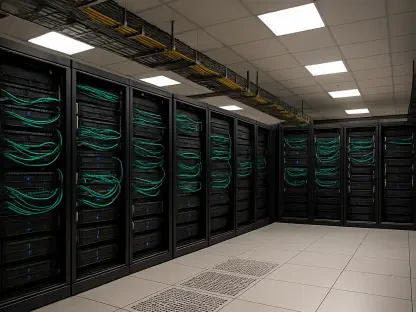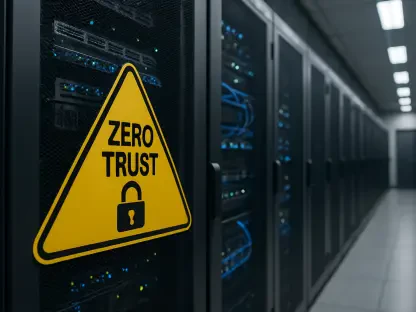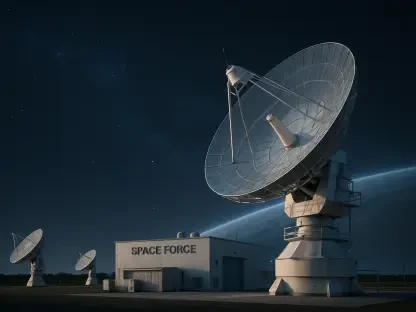The Internet of Things (IoT) is revolutionizing various aspects of our daily lives by connecting physical objects and spaces to the internet. This interconnectivity enhances convenience, efficiency, and overall quality of life. From smart homes to healthcare, IoT is making significant strides in transforming how we live and interact with technology.
Innovations for Changing the Convenience of Household
Smart Home Automation
Smart homes are a prime example of how IoT is changing household convenience. By automating mundane tasks, smart homes allow control of home appliances through simple commands issued via touch, tap, or voice. These systems can adjust thermostats, lights, and even order goods just by listening to voice commands. This automation not only makes household management more convenient but also enhances the overall quality of life by saving time and making it easier to manage various home functions.
One of the most transformative impacts of IoT on household convenience is the way it organizes and simplifies daily home management. Imagine walking into your home and having the thermostat set to your preferred temperature, the lights gradually brightening to match the evening ambiance, and having your favorite playlist start playing—all automatically. With smart home integration, appliances and devices are connected to a central system that understands your preferences and routine. This level of customization not only provides luxury but also improves resource management and energy efficiency. By reducing the need for continuous manual adjustments, IoT-driven smart homes contribute significantly to time management, thereby allowing residents to focus on more critical or enjoyable activities.
Enhanced Home Entertainment
IoT has also deeply integrated into home entertainment, providing new interactive possibilities. Remote gaming systems, such as live casino platforms, exemplify how IoT can deliver high-quality digital content and elevate home entertainment. These innovations save time and offer a more immersive and engaging experience, making home entertainment more dynamic and enjoyable. For instance, the advent of smart TVs and streaming devices has transformed how we consume content, allowing seamless integration with various streaming services and internet-based entertainment options. By connecting to smart speakers and home theater systems, users can experience a movie theater ambiance right in their living rooms. Moreover, virtual reality (VR) and augmented reality (AR) have taken interactive gaming to new heights, providing life-like simulations and experiences. IoT technologies enable these devices to work cohesively, offering a more unified and enjoyable user experience. This interconnected system not only enhances how we enjoy media but also promotes innovation in the entertainment industry, setting new standards for what home entertainment can achieve.
Progress in Healthcare Supervision
Continuous Health Tracking
The medical field has seen significant benefits from IoT, particularly in patient care through continuous health tracking. Wearable trackers and smart medical equipment provide real-time data on vital health metrics like heart rate, blood pressure, and sleep patterns. These devices facilitate continuous monitoring, which is especially crucial for individuals with chronic conditions, ensuring they receive timely and appropriate care.
Continuous health tracking through IoT has been transformational, particularly for those with chronic health conditions who require regular monitoring. Wearable devices, such as smartwatches and fitness trackers, continuously collect and analyze data, alerting users and healthcare providers to potential issues in real-time. This proactive approach means that patients can receive care before conditions worsen, leading to better health outcomes and potentially saving lives. Additionally, these devices track daily activities, helping users understand the impact of their habits on their health and motivating them to make healthier choices. With the integration of machine learning algorithms, these wearables can even predict health trends, thus facilitating personalized health management and early interventions.
Remote Healthcare and Emergency Alerts
IoT-connected devices enable doctors to diagnose and treat patients from afar, ensuring consistent and prompt medical attention. Emergency alerts triggered by abnormal readings can save lives by notifying healthcare professionals or caregivers immediately. These advancements make healthcare more proactive and personalize treatment plans based on real-time data, improving patient outcomes and overall health management.
Telehealth services have flourished because of IoT, allowing patients to consult with healthcare professionals without needing a physical visit. This is particularly beneficial in rural or underserved areas where healthcare access is limited. IoT devices such as connected blood pressure monitors, glucose meters, and even smart pill bottles that remind patients to take their medication have shown to be effective in managing chronic diseases. Furthermore, during emergencies, these devices can promptly send alerts to the healthcare team or emergency contacts, ensuring immediate response. This integration of IoT in healthcare not only makes medical services more accessible but also reduces the overall burden on healthcare facilities by minimizing unnecessary visits and hospitalizations. The technology supports a more sustainable and patient-centric approach to healthcare.
Enhancing Daily Applications
Intelligent Interactions in Daily Life
IoT extends its influence to various daily applications, enhancing interactions and improving the quality of life. Social media platforms use advanced technologies to create seamless user interfaces and rich feedback mechanisms, adding dynamism to user experiences. For instance, platforms like MelBet employ these technologies to provide a more immersive online betting experience, making interactions feel realistic and engaging.
Social media platforms are designed to offer a personalized experience by analyzing user behavior and preferences, leading to more relevant content and advertisements. IoT plays a fundamental role in this by connecting various devices and ensuring data flow that supports these intelligent systems. For example, smart assistants like Amazon Alexa or Google Home can be linked to social media platforms, allowing users to post updates, control smart home features, and check notifications through voice commands. This seamless interaction between devices and applications enhances user convenience and engagement. Ultimately, the goal is to make digital interactions more intuitive and integrated with our daily routines, thereby improving user experience and satisfaction.
Smart City Applications
In smart cities, IoT leads to more systematic and efficient urban management. Traffic light systems that adjust signals based on real-time traffic data reduce congestion, while security cameras enhance safety and monitor air quality. IoT-enabled water and energy meters track consumption and reduce wastage, making urban living more efficient and environmentally friendly.
Smart city initiatives are designed to utilize IoT to build more sustainable, connected, and responsive urban environments. For example, smart transportation systems can monitor traffic flow, predict congestions, and provide real-time updates to commuters. This leads to reduced travel time, lower emissions, and improved public transport efficiency. Additionally, smart waste management systems that use IoT sensors to monitor waste levels can optimize collection routes and schedules, thus reducing fuel usage and operational costs. This smart approach extends to urban infrastructure maintenance, where IoT devices can detect wear and tear in public utilities like water pipes or electrical grids, allowing for timely repairs and maintenance. These applications represent just a fraction of IoT’s potential in constructing smarter, more sustainable cities.
IoT in Fitness and Lifestyle Mobile Applications
Real-Time Health Data and Recommendations
Fitness and lifestyle apps leveraging IoT provide real-time health data and personalized recommendations. These apps connect with fitness trackers to monitor steps, pulse rates, and progress toward fitness goals. Additionally, lifestyle apps aid daily living by reminding users to hydrate, follow sleep schedules, and adhere to meal plans, ensuring a comprehensive health and wellbeing tracking experience.
In the fitness realm, IoT technology enables users to set and track personalized fitness goals with unparalleled accuracy. Devices such as heart rate monitors, smartwatches, and fitness bands collect data that apps analyze to provide actionable insights and recommendations for improving physical fitness. These recommendations are personalized, taking into account factors unique to the user, such as age, body type, and fitness level. Moreover, sleep tracking technology in these devices monitors sleep patterns to suggest improvements in sleep quality, which is essential for overall health. By continuously feeding data into these applications, IoT ensures a dynamic and responsive approach to fitness and lifestyle management, enabling users to make informed decisions about their health.
Integration with Smart Devices
Connecting fitness and lifestyle apps with other smart devices, such as smart scales or home assistants, ensures a seamless health and wellbeing tracking experience. IoT-driven applications simplify achieving a balanced lifestyle by automating and optimizing daily health-related tasks, making it easier for users to maintain their health and fitness goals.
Integrated smart fitness ecosystems enhance the user experience by providing a holistic approach to health management. For instance, a smart scale can sync with a fitness app to track weight changes, body mass index (BMI), and other health metrics over time. Similarly, smart kitchen appliances can suggest meal plans based on dietary needs recorded in lifestyle apps, reinforcing healthy eating habits. These interconnected systems enable unified data collection and analysis, offering a complete picture of an individual’s health and lifestyle choices. The seamless connectivity between these devices creates an environment where each aspect of health monitoring supports the others, resulting in a more comprehensive and effective approach to personal health management.
Upgrading of Industrial Efficiency
Predictive Maintenance in Manufacturing
Industries are experiencing significant improvements in efficiency due to IoT. Manufacturing plants use IoT sensors to monitor machinery, predict potential issues, and prevent costly breakdowns, streamlining production processes. These technologies enhance cost-effectiveness by reducing reliance on human labor and allocating resources toward IoT-enabled equipment.
Predictive maintenance is perhaps one of the most impactful benefits of IoT in manufacturing. By utilizing IoT sensors, companies can gather detailed data on machinery performance and condition. This data helps in identifying patterns that precede equipment failures, allowing for scheduled maintenance before any actual breakdown occurs. This approach minimizes unplanned downtime and maximizes machinery lifespan and operational efficiency. Additionally, IoT-driven predictive maintenance reduces the need for manual inspections, which can be time-consuming and prone to error. Automated systems can continuously monitor machinery health, triggering maintenance alerts only when necessary, ensuring resources are used optimally and preventing workflow disruptions.
Optimizing Logistics
In logistics, IoT helps manage the flow of goods through geolocation services, ensuring timely delivery and maintaining product quality. This is crucial for business reliability and customer satisfaction. Overall, IoT strengthens industrial operations by promoting predictive maintenance and optimizing logistics, leading to more efficient and reliable industrial processes.
Fleet management systems empowered by IoT provide real-time tracking of vehicles and shipments, optimizing route planning and reducing delivery times. These systems can monitor traffic conditions, weather patterns, and even driver behavior, enabling robust management of logistics operations that ensure the timely and safe transportation of goods. Moreover, IoT sensors can be used to monitor storage conditions like temperature and humidity for sensitive products, ensuring they reach their destination in optimal condition. This level of control and oversight reduces the risk of loss or damage and enhances supply chain transparency. Consequently, IoT not only improves logistical efficiency but also supports better decision-making and customer service.
Increasing the Yields in Agriculture
Precision Farming
In agriculture, IoT allows for increased crop production and efficient use of resources. Connected devices enable farmers to measure soil health by testing moisture and nutrient levels, guiding planting and watering schedules. These advancements ensure sustainable farming practices, essential for feeding the global population while protecting the environment.
Precision farming uses IoT technology to collect and analyze data for optimizing farming practices. Devices such as soil sensors, weather stations, and GPS-enabled tractors provide accurate data on soil conditions, crop health, and weather forecasts. This information helps farmers make informed decisions on when to plant, irrigate, and harvest crops, ensuring maximum yield with minimal resource waste. Advanced IoT systems can even automate these decisions, adjusting irrigation systems and deploying pest control measures as needed. By maximizing efficiency and reducing environmental impact, IoT-driven precision farming supports both agricultural productivity and sustainability, ultimately contributing to food security and resource conservation.
Weather and Irrigation Management
IoT tools help track weather patterns, alerting farmers to conditions such as rain, frost, or drought, allowing for timely responses. Automated irrigation systems precisely control water release based on necessity, conserving water and enhancing crop yield. These technologies make farming more efficient and sustainable, contributing to higher yields and better resource management.
Effective weather and irrigation management are critical components of modern agriculture, and IoT excels in these areas by providing real-time insights and automated controls. Weather stations equipped with IoT sensors gather data on temperature, humidity, rainfall, and other crucial metrics. This data helps farmers predict and react to environmental changes promptly, preventing crop damage and optimizing growth conditions. Meanwhile, smart irrigation systems use sensor data to determine the precise amount of water required by crops at any given time, significantly reducing water waste and ensuring plants receive adequate hydration. These combined technologies enhance resource efficiency, ensuring that farming practices utilize the least amount of inputs for the highest possible yield, creating a sustainable and productive agricultural environment.
Final Words
The Internet of Things (IoT) is dramatically altering numerous facets of our everyday lives by linking physical objects and spaces to the internet. This seamless interconnectivity not only boosts convenience and efficiency but also significantly enhances the overall quality of life. From the realm of smart homes, where everyday appliances can be controlled remotely via smartphones, to advancing the healthcare sector with wearable devices that monitor vital signs, IoT is revolutionizing how we exist and interact with technology. In smart cities, IoT technology optimizes traffic management, reduces energy consumption through smart grids, and increases public safety with connected surveillance systems. In the industrial sector, manufacturing processes are becoming more efficient through predictive maintenance of machinery and real-time inventory tracking. IoT’s wide-ranging applications are reshaping daily routines, making tasks more intuitive and interconnected. By bridging the physical and digital worlds, IoT is paving the way for a smarter, more connected future.









